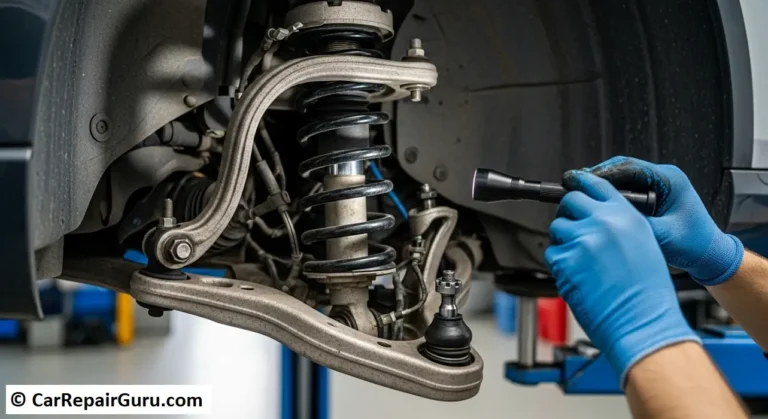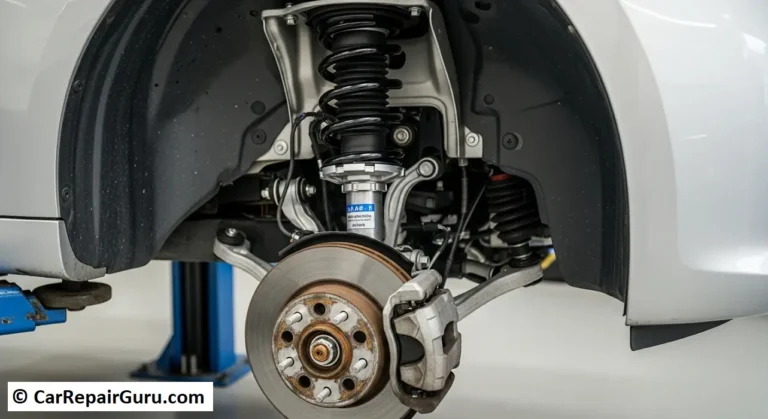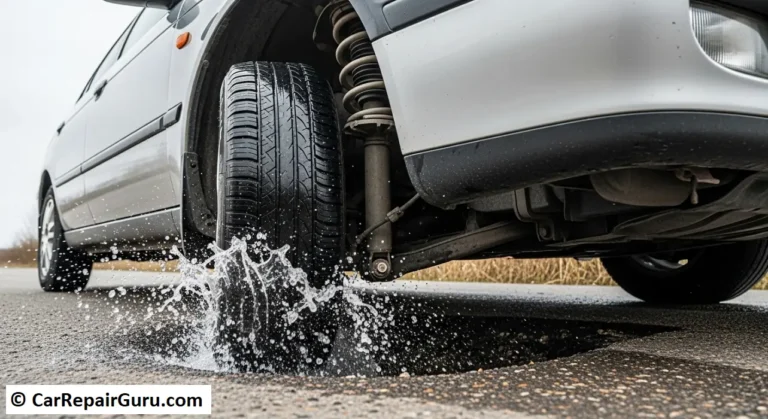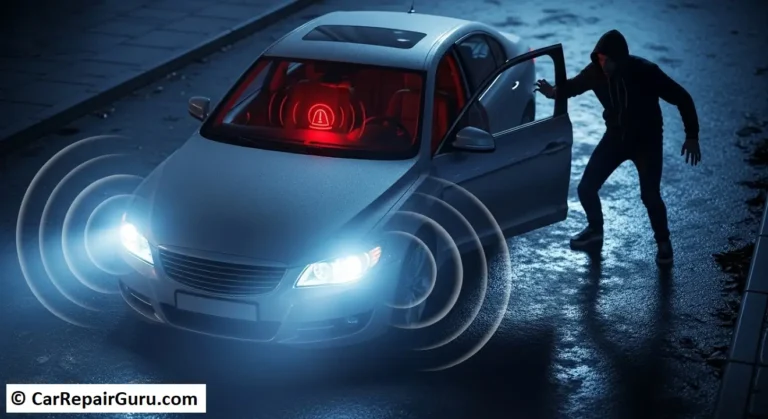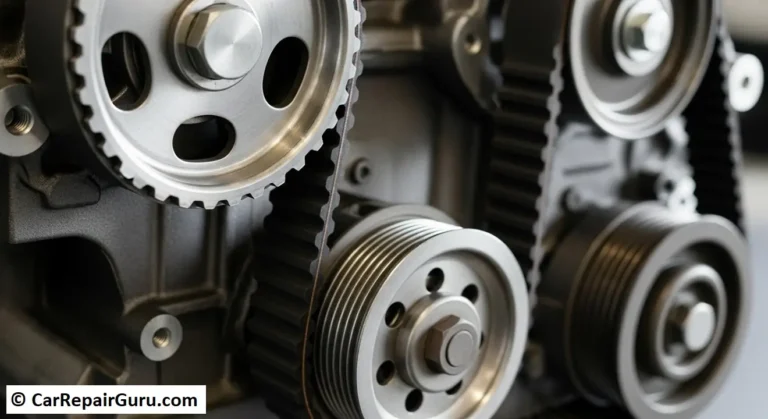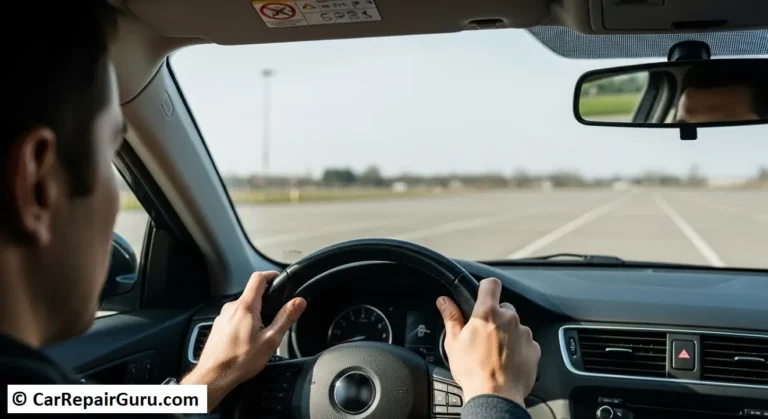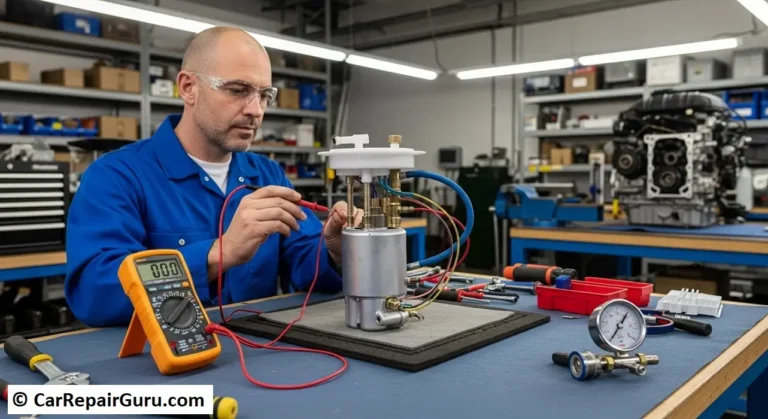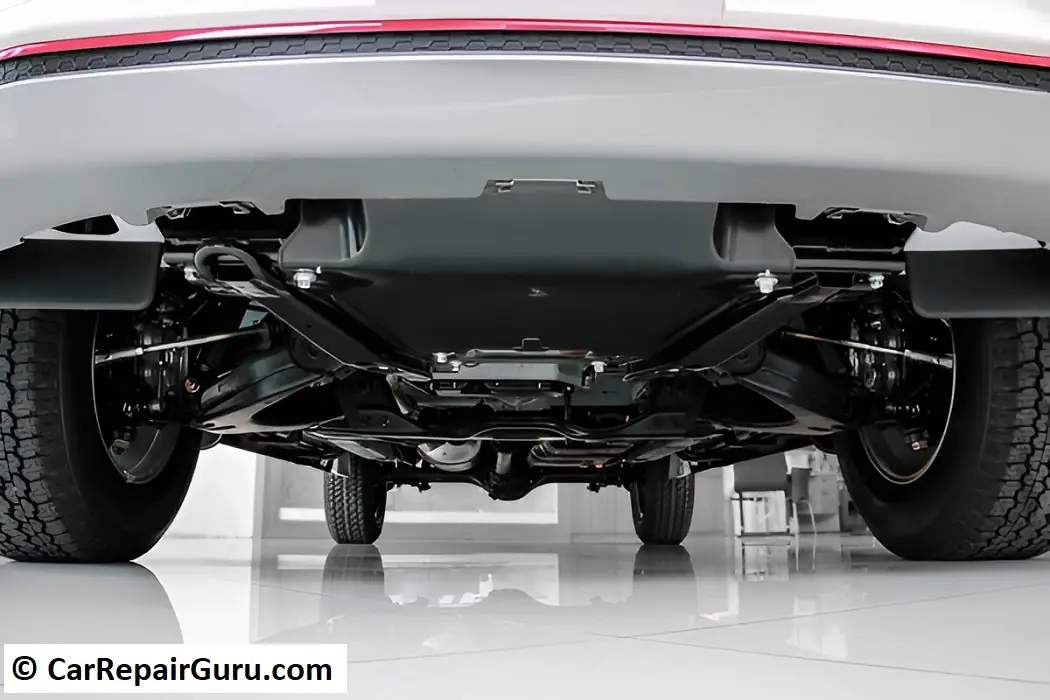
What are Suspension Systems and Why are They Important?
Imagine driving over a bumpy road without feeling every jolt and shake—thank your car’s suspension system for that. Suspension systems play a critical role in making your ride smooth, safe, and enjoyable. By absorbing shocks and maintaining tire contact with the road, these systems ensure not only comfort but also stability and control during driving.
At its core, a suspension system is a network of components designed to manage the dynamic forces acting on a vehicle. Whether you’re cruising down the highway or navigating uneven terrain, a well-functioning suspension system keeps your car balanced and predictable.
This guide dives deep into understanding how these systems work, their components, types, and advancements. Ready to learn how suspension technology transforms your driving experience? Let’s get started!
Key Components of Suspension Systems
A vehicle’s suspension system is an intricate assembly of parts working together to ensure comfort, safety, and handling. Understanding its key components helps you appreciate the mechanics behind a smooth ride.
Springs: Types and Their Functions
Springs are the backbone of any suspension system, absorbing shocks from uneven road surfaces. They compress and expand to manage the energy from bumps, keeping your vehicle stable.
- Coil Springs: Common in modern vehicles, these cylindrical springs are compact yet efficient, offering a smooth and controlled ride.
- Leaf Springs: Used in heavier vehicles like trucks, these flat, layered springs are ideal for carrying substantial loads while maintaining flexibility.
- Torsion Bars: Instead of compressing, these bars twist to absorb shocks, making them a space-saving alternative for certain vehicle designs.
Each type of spring is tailored to specific vehicle needs, balancing comfort and durability.
Shock Absorbers (Dampers): Controlling Spring Motion
While springs absorb energy, shock absorbers dissipate it. Without dampers, your car would bounce endlessly after hitting a bump. These hydraulic devices control spring movement, ensuring stability and minimizing wear on other components.
Shock absorbers also improve handling by keeping your tires in constant contact with the road, a key factor in vehicle control and safety.
Linkages and Bushings: Connecting Components
Linkages and bushings act as the glue that holds the suspension system together. Linkages connect suspension components to the vehicle’s chassis, ensuring proper movement.
Bushings, typically made of rubber or polyurethane, cushion these connections, reducing vibrations and noise. They also prevent metal parts from grinding against each other, enhancing the system’s lifespan.
Together, these components create a harmonious system that absorbs shocks, maintains road contact, and keeps your drive safe and smooth.
Types of Suspension Systems
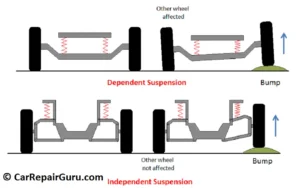
Suspension systems are categorized based on how their components interact and distribute forces. Let’s explore the three main types—dependent, independent, and semi-independent systems—and their unique characteristics.
Dependent Suspension Systems
A dependent suspension system features a solid axle that connects the wheels on either side. When one wheel moves, the motion affects the opposite wheel, as both are mechanically linked.
Characteristics:
- The wheels maintain a fixed distance from each other.
- Typically used in heavy-duty vehicles due to their durability and simplicity.
- They are easier and less expensive to manufacture and maintain.
Examples:
- Leaf spring suspensions commonly found in trucks.
- Solid axle setups in some off-road vehicles for improved load-bearing capacity.
While dependent systems are sturdy, their lack of independent movement can reduce ride comfort and handling precision, especially on uneven terrain.
Independent Suspension Systems
In independent suspension systems, each wheel moves independently, allowing the vehicle to adapt more effectively to road irregularities.
Features and Benefits:
- Superior ride comfort and handling due to minimized transfer of forces between wheels.
- Improved traction and tire contact on uneven surfaces.
- Lighter and more compact design, ideal for modern passenger vehicles.
Examples:
- MacPherson Strut: Common in front-wheel-drive cars for its simplicity and cost-effectiveness.
- Double Wishbone: Offers better handling and stability, making it popular in sports cars.
- Multi-Link Suspension: Provides exceptional flexibility and precision, often seen in luxury vehicles.
Independent systems enhance the driving experience by combining comfort, control, and performance.
Semi-Independent Suspension Systems
Semi-independent systems are a middle ground between dependent and independent setups. They provide limited independent movement while maintaining a mechanical connection between wheels.
Overview and Applications:
- Combines the robustness of dependent systems with improved handling characteristics.
- Uses components like torsion beam axles that allow some flexibility without fully independent operation.
- Common in compact and mid-sized cars, balancing cost and performance.
Semi-independent systems are favored for their cost-effectiveness and decent ride quality, making them suitable for budget-friendly vehicles without sacrificing comfort.
By understanding these suspension types, you can see how each design serves specific driving needs, from rugged off-roading to smooth city cruising.
Working Principles of Suspension Systems
A vehicle’s suspension system is a marvel of engineering, designed to manage and dissipate the forces encountered while driving. Its primary goal is to ensure a smooth ride, maintain tire contact with the road, and enhance handling and safety. Here’s how it works:
Force Dissipation and Energy Conversion
When a vehicle moves over an uneven surface, external forces like bumps, potholes, or road irregularities exert energy on the wheels. Without a suspension system, this energy would directly transfer to the vehicle’s body, leading to discomfort and instability.
The suspension system dissipates this energy by converting it into heat or mechanical motion. Springs absorb the energy, compressing and expanding to manage upward and downward forces. Meanwhile, shock absorbers (dampers) help control this motion, ensuring the energy doesn’t cause excessive bouncing or swaying.
This dynamic interaction between components maintains vehicle stability and comfort while reducing wear and tear on other parts.
Interaction Between Springs and Dampers
Springs and dampers work in harmony to manage motion:
- Springs: When the wheel encounters a bump, the spring compresses, absorbing the shock. Once the obstacle is passed, the spring expands to its original shape, releasing stored energy. Without control, this expansion would cause the vehicle to bounce.
- Shock Absorbers (Dampers): To counteract bouncing, shock absorbers slow the spring’s motion by converting kinetic energy into heat through hydraulic or gas-based mechanisms. This damping effect ensures the spring’s movement is gradual and controlled.
Together, these components:
- Maintain tire contact with the road, improving traction and steering.
- Minimize the transfer of road irregularities to the passenger cabin, enhancing comfort.
- Reduce body roll during turns and prevent excessive swaying on uneven terrain.
This balance between springs and dampers is essential for a smooth, stable, and safe driving experience, regardless of road conditions.
Common Suspension System Designs
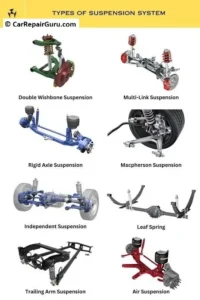
Suspension systems come in various designs, each tailored to specific vehicle needs and performance goals. Let’s explore three popular designs: MacPherson strut, double wishbone, and multi-link suspension systems.
MacPherson Strut: Structure and Usage
The MacPherson strut is one of the most widely used suspension designs, especially in modern front-wheel-drive vehicles.
Structure:
- Combines a coil spring and shock absorber into a single compact unit.
- The strut assembly connects directly to the vehicle’s body and the wheel hub.
Usage:
- Common in sedans, hatchbacks, and compact SUVs due to its simplicity and cost-effectiveness.
- Lightweight and space-saving, making it ideal for smaller vehicles.
While cost-efficient and easy to maintain, the MacPherson strut offers limited performance in extreme driving conditions.
Double Wishbone: Design and Advantages
The double wishbone suspension uses two triangular arms (upper and lower control arms) to connect the wheel to the chassis.
Design:
- Provides greater flexibility for wheel movement.
- Can accommodate larger brakes and wider tires.
Advantages:
- Superior handling and stability, especially during cornering.
- Precise control over wheel alignment, minimizing tire wear.
Double wishbone suspensions are commonly found in sports cars and performance-oriented vehicles where handling is a priority.
Multi-Link Suspension: Complexity and Performance Benefits
The multi-link suspension is a sophisticated design that uses multiple arms or links to control wheel movement independently.
Complexity:
- Involves more components than other designs, making it complex and expensive.
- Requires precise engineering and higher maintenance.
Performance Benefits:
- Exceptional flexibility and ride comfort, adapting well to various driving conditions.
- Enhances handling, stability, and road grip, making it a favorite for luxury and high-performance vehicles.
While costly, the multi-link suspension delivers unmatched performance, combining comfort with precise handling.
Each suspension design caters to different needs, from everyday driving to high-speed performance, demonstrating the versatility of automotive engineering.
Maintenance and Troubleshooting
Proper care of your vehicle’s suspension system is essential to ensure a smooth, safe ride and to prevent costly repairs. Here’s how to identify potential problems, maintain your system, and know when to seek professional help.
Signs of Suspension Issues
Recognizing the early signs of suspension problems can save you from larger issues later:
- Bumpy Rides: If your vehicle feels unusually rough or bounces excessively after hitting bumps, the shocks or springs may be worn out.
- Uneven Tire Wear: Uneven patterns on your tires often indicate misaligned suspension components.
- Drifting or Pulling: If the vehicle drifts during turns, it may signal worn shocks or damaged linkages.
- Nose Diving or Squatting: A noticeable dip in the front of the car during braking, or excessive squatting during acceleration, points to failing dampers.
- Noisy Suspension: Clunking, squeaking, or knocking sounds when driving over bumps may indicate worn bushings or loose components.
Basic Maintenance Tips
Routine care can extend the life of your suspension system:
- Regularly inspect shocks, struts, and springs for wear or damage.
- Check bushings and linkages for cracks or looseness.
- Keep your tires properly inflated and balanced to reduce strain on the suspension.
- Schedule regular wheel alignments to ensure proper handling and even tire wear.
When to Consult a Professional
While minor issues like tire pressure or alignment can be handled at home, consult a mechanic for:
- Persistent noises or performance issues.
- Visible leaks in shock absorbers or struts.
- Major repairs, such as replacing springs or dampers.
A well-maintained suspension system not only ensures a comfortable ride but also enhances your vehicle’s safety and performance.
Advancements in Suspension Technology
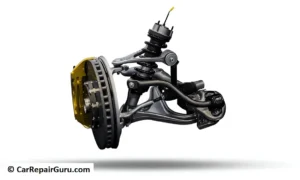
Modern suspension technology is evolving rapidly to meet the demands of safer, more comfortable, and efficient vehicles. Two groundbreaking advancements—active and adaptive suspension systems—are revolutionizing how vehicles respond to road conditions.
Active and Adaptive Suspension Systems
- Active Suspension Systems: These systems use actuators to actively control the movement of the wheels and chassis. Sensors monitor road conditions and adjust the suspension in real time to optimize comfort and handling. For example, active suspensions can reduce body roll during sharp turns or improve stability on uneven terrain.
- Adaptive Suspension Systems: Unlike active systems, adaptive suspensions rely on variable dampers that automatically adjust stiffness based on driving conditions. They offer modes such as comfort, sport, or off-road, allowing drivers to tailor the ride experience.
Both technologies improve ride quality, enhance safety, and provide a more personalized driving experience.
Future Trends in Suspension Technology
The future of suspension technology lies in integrating advanced electronics and artificial intelligence. Key trends include:
- Electromagnetic Suspensions: Using magnetic fields for smoother and faster adjustments.
- Predictive Suspension Systems: Leveraging cameras and sensors to anticipate road conditions and pre-adjust suspension settings.
- Sustainability: Development of lightweight materials and energy-efficient systems to reduce vehicle emissions.
These advancements not only elevate driving comfort but also contribute to the future of autonomous vehicles by ensuring optimal road handling and passenger safety.
Conclusion
Suspension systems are the unsung heroes of modern vehicles, ensuring comfort, stability, and safety. From understanding the components like springs, dampers, and linkages to exploring various designs such as MacPherson strut, double wishbone, and multi-link systems, we’ve covered the essentials of how suspension systems work. Advancements like active and adaptive systems are setting new standards for performance and comfort.
A well-maintained suspension system not only enhances driving dynamics but also protects other vehicle components. By understanding its principles and upkeep, you can ensure a safer, smoother ride and prolong your vehicle’s lifespan.
suspension system (FAQs)
What is the primary function of a vehicle’s suspension system?
The primary function of a vehicle’s suspension system is to absorb shocks from road irregularities, maintain tire contact with the road, and provide a smooth, stable, and safe driving experience. It balances comfort, handling, and safety by managing dynamic forces acting on the vehicle.
How often should suspension components be inspected?
It’s recommended to inspect suspension components during routine maintenance, typically every 12,000–15,000 miles or annually. However, if you frequently drive on rough terrain or notice signs of suspension issues, inspections should be conducted more often.
What are the signs of a failing suspension system?
Common signs include:
- Excessive bouncing after hitting a bump.
- Uneven tire wear.
- Noises like clunking or squeaking when driving.
- Difficulty steering or drifting during turns.
- The car “nose-diving” during braking or “squatting” during acceleration.
If you notice these symptoms, consult a professional mechanic.
Can I upgrade my vehicle’s suspension system for better performance?
Yes, suspension upgrades can enhance performance and comfort. Popular upgrades include:
- Installing performance shocks and struts.
- Switching to a sport-tuned or air suspension system.
- Adding stabilizer bars or upgrading bushings.
Consult a professional to determine the best upgrade based on your driving needs.
How does an active suspension system differ from a passive one?
A passive suspension system relies on fixed components like springs and dampers to absorb shocks, offering no real-time adjustments. Active suspension systems, on the other hand, use sensors and actuators to adjust the suspension dynamically based on road conditions, providing superior comfort and control.
